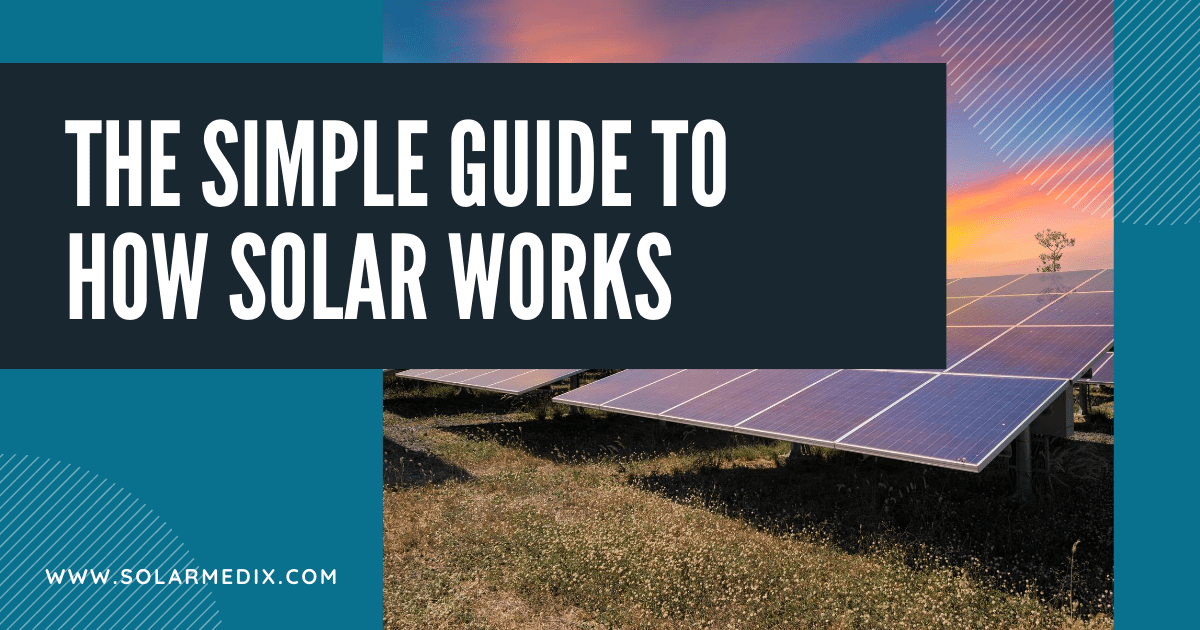Do you understand how solar works? Solar power generated by your solar panels is done so via the photoelectric effect. It entails taking the photons generated by the sun to separate electrons from the atoms to which they are bound. When this happens, electricity is generated. The process of how solar energy is produced can be broken down into a few simple steps.
The Solar Array Capture Light
Solar panels installed on your roof capture light from the sun. These solar panels have photovoltaic cells built into them. The PV cells take the photons, which are light particles, and convert them into solar electricity. When the sun’s rays reach the solar panels, the PV cells produce DC electricity.
While DC power is the final product from solar panels, the electronics in your home are designed to use alternating current (AC). The DC power is sent to the solar inverters to convert it into AC power.
The Solar Inverters
It would be impossible to talk about how solar works without understanding the importance of solar inverters. All the DC power from the solar panels is sent to the solar inverters, where it is converted into AC power. Most solar systems feature a central inverter called a string inverter.
Some systems come with micro inverters. These inverters are connected to each solar panel at the back. The main function of the inverters is to convert the DC power from the solar panels to AC power. The AC power is what power electronics in your home.
Solar Power in the Home
Once the DC power is converted into AC power, it is sent to the net meter. It then enters the home, and it is used to power devices in the home. The power functions just like normal electricity you get from the grid. There are no changes that have to be made to the home.
If the solar panels are not producing enough power to cover all your needs, the power company will send extra power to your home. This ensures that your home will continue to function at all times. However, the solar array will sometimes produce more energy than your home needs.
Excess Power is Sent to the Grid
When you are on solar power, it might seem like a waste of time to be connected to the grid. However, it comes with some advantages. When your home produces excess power, for instance, when you are on vacation, and nobody is using the energy from your home, the excess power is sent to the grid.
Besides that, at night, the solar panels do not generate any power. As a result, being connected to the grid ensures that you can power your home at night when there is no solar power. Retaining this excess power and how you store it is crucial in how solar works for you financially.
About Net Metering
Net metering is made possible via a net metering agreement. With net metering, your power company will pay you in energy credits for any excess power generated by your solar panels.
Excess power is sent to the grid, and depending on the conditions, such as solar intensity, you can end up having a negative electricity bill. In some places, the power company will even cut you a check for the excess power that your solar system generates.
The calculations for the excess power are made using a net meter that is installed in your home. It works just like the electric meter you have, but it measures the power in two directions.
With a PPA agreement, you pay for the solar power your panels produce, and since you are relying less on the grid, it will offset the total usage cost.
Combined with the accruing net metering credits, it will save you a lot of money over time. Within about 12 months of installing the system, the net metering effect will begin tipping in your favor.
Maintenance for the Solar System
Solar systems require little to no maintenance. This is because solar panels can last for decades without any major upkeep. You should consider occasionally hosing them down to get rid of dust. Besides that, you must ensure that they are free of any snow. The only part that you might need to replace over the lifetime of a solar panel is the inverter.
The inverters come with a warranty that can be as long as 15 years. When the inverter develops a problem, it will simply stop working, and it has to be replaced. There is also the option to use micro inverters. These inverters have a much longer lifespan, although they have a higher initial cost. A Typical microinverter is estimated to last up to 25 years.
How Solar Works In Winter and Cloudy Days
Solar panels are at their peak effectiveness in direct sunlight. However, in most cases, solar panels will generate enough power even when it’s cloudy outside. As for the winter season, solar panels are still just as effective since they are powered by light, not heat. Solar panels can actually be more efficient in the winter since it is colder, and the efficiency of the panels rises with a reduction in ambient temperatures.
Can Solar Panels Save Money?
The simple answer is yes. Besides helping to boost the value of your home, solar panels will pay for themselves over time. Depending on the government incentives in your locality and the amount of energy that’s generated, a solar energy system will pay for itself over time.
The Basis of How Solar Works
Now that you understand how solar works, let us know if we can help you with any of your solar needs. Just contact us today!













